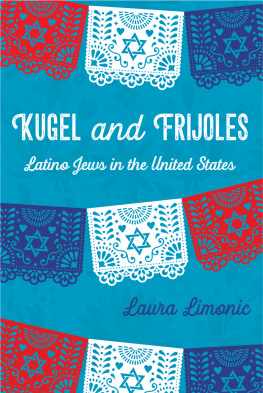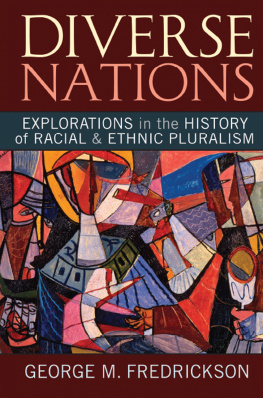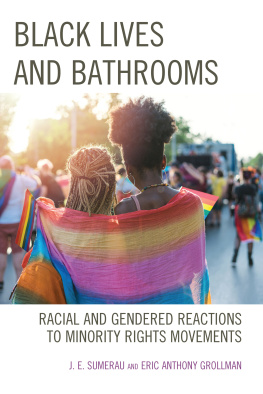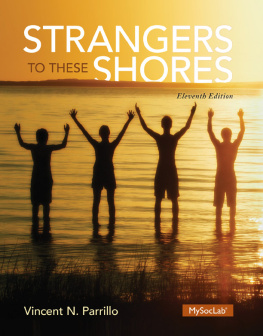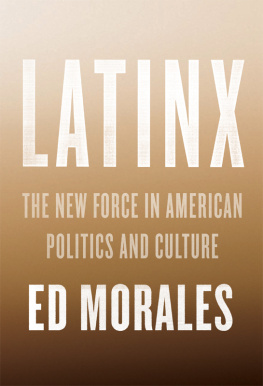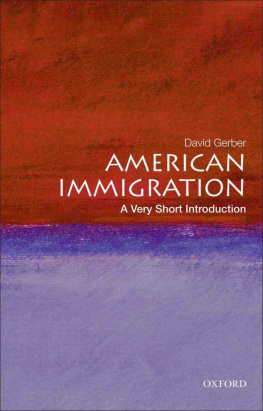First published 2014 by Paradigm Publishers
Published 2016 by Routledge
2 Park Square, Milton Park, Abingdon, Oxon OX14 4RN
711 Third Avenue, New York, NY 10017, USA
Routledge is an imprint of the Taylor & Francis Group, an informa business
Copyright 2014, Taylor & Francis.
All rights reserved. No part of this book may be reprinted or reproduced or utilised in any form or by any electronic, mechanical, or other means, now known or hereafter invented, including photocopying and recording, or in any information storage or retrieval system, without permission in writing from the publishers.
Notice:
Product or corporate names may be trademarks or registered trademarks, and are used only for identification and explanation without intent to infringe.
Library of Congress Cataloging-in-Publication Data
Rose, Peter Isaac, 1993
They and we: racial and ethnic relations in the United States and beyond/Peter I. Rose.Seventh edition, Fiftieth anniversary year.
pages cm
Includes bibliographical references and index.
ISBN 978-1-61205-660-9 (pbk.: acid-free paper)ISBN 978-1-61205-635-7 (consumer ebook)
1. MinoritiesUnited States. 2. DiscriminationUnited States. 3. United StatesRace relations. 4. United StatesEthnic relations. I. Title.
E184.A1R72 2014
305.800973dc23
2014005891
Designed and typeset by Straight Creek Bookmakers.
ISBN 13: 978-1-61205-660-9 (pbk)
The first edition of They and We was completed in 1963, the year the Civil Rights Movement reached its zenith. "Black Power" was but a hushed whisper then. Few who listened to Reverend Martin Luther King Jr. address a quarter of a million black and white Americans assembled on the Mall in front of the Lincoln Memorial in Washington, DC, on August 28, 1963, realized that he, his people, and their allies in the struggleand their enemieswere about to enter a new era. The whisper was to become a roar.
Those days now seem light-years away. In the period immediately before the March on Washington for Jobs and Freedom, thousands had participated in a crusade of radical pacifism, a campaign involving a variety of nonviolent direct action tacticsmarches, boycotts, sit-ins, and freedom ridesseeking to force the country to honor its own vaunted ideals and win for all the rights most white Americans took for granted. It was a difficult and uphill struggle. Although the costs were considerable, there were a number of significant victories. But several events that occurred a few months after the March on Washington led to a dramatic change in the tone, the temper, and the orientation of the movement.
The mounting frustration of militant blacks and many others confined to inner-city ghettos became painfully apparent to all members of society. Anger was expressed in a variety of contexts. Riots broke out in some cities. Within the civil rights organizations, many whites who had played key roles as organizers or foot soldiers were eased or pushed from positions of leadership; many African Americans (and Asian Americans and Latinos and Native Americans in their own fashions) foreswore the rhetoric of integration for the rhetoric of revolution.
In many ways the rhetoric was reified. In a real sense there was a revolution.
First, the members of the dominant white majority were told over and over that they, all of them, and not just "the southern bigots," were racists. A spate of new books hammered home the theme. Many black people who, for any number of reasons, had not organized themselves before began to add action to their verbal attacks. Demands were made, met, escalated, and often made again. A new litany began to be heard. Watchwords like "Freedom, Now" and "We Shall Overcome" were replaced by various new slogans that reflected the view tersely expressed in the warning, "Look out, whitey, black power gon' get your momma," and the self-asserting statement, "Black is beautiful." Then there came a call for recompense. Ultimately, in what many saw as justified and others saw as a kind of racism-in-reverse, the pleas for admission and fairness became a call for special treatment to help those handicapped by the stigma of inferiority to improve their chances to ran an equal race.
As the demands, particularly of college students, were beginning to be responded to by frightened faculties and baffled administrations (often liberal and therefore particularly susceptible to the accusations of the protesters), more conservative organizations began making their own concessions. For example, large industries increased the level of tokenism to include more African American and Latino workers, especially in places where they would be seen. Television networks and local stations began to employ them, too. In the beginning most of the new hires were assigned to do race-based "Minority Reports." (It would be several more years before they would begin to move more directly into mainline positions.)
The pressure tactics were quite successful. It was a revelation to some to see how many qualified "people of color" were actually available as potential students for Ivy League colleges, as workers in various Fortune 500 companies, as TV announcers and print media commentators when the threat of disruption loomed on the immediate horizon.
As disaffected members of the old civil rights movement were beginning to rally their troops for new assaults on the academy and the factory, the people on the street became involved, too. Some did it in organized fashion, others more spontaneously. Dozens of urban disturbances flared up in cities as different as New York, Detroit, Cleveland, and Los Angeles as poor folks joined in the burning and looting in a frenzied expression of frustration and bitterness and, for some, the sheer thrill of revenge.
Other people engaged in more carefully planned political activities, many of them centered on the issue of local or community control, particularly of schools. Still others simply took renewed pride in who they were, if not where they found themselves.
All thisthe rhetoric, the organizing, the calculated attacks on the system, and the spontaneous outburstsshook the entire nation. Many white Americans reeled in disbelief and then, in a variety of ways, they reacted.
Part of the response came from traditional reactionaries whose predominant theme was "We told you so." But more significant, and far greater in the numbers involved, was the response of those in two significant cohorts: white, Protestant, lower-middle-class, and small-town "middle Americans"; and working-class, predominantly Catholic, and urban "white ethnics." The latter group, often but a generation or two from ghetto living themselves, began to feel that they, in particular, were being asked to pay for the sins of other peoples' fathers and mothers.
Backlash became a reality, though, save for widespread reaction to forced school busing, it was far less vicious than many had predicted. Even so, by the early 1970s the bookstores had another section to add to the one that shelved volumes by Maya Angelou, James Baldwin, Eldridge Cleaver, Angela Davis, Ralph Ellison, Frantz Fanon, and on through the rest of an alphabetical list of black writers and writers on black subjects. The new shelf, not yet so long, included books with telling titles like Murray Friedman's Overcoming Middle Class Rage, Nathan Glazer's Affirmative Discrimination, Andrew M. Greeley's Why Can't They Be Like Us?, Louise Howe's The White Majority, Michael Novak's The Rise of the Unmeltable Ethnics, Peter Shrag's Out of Place in America, and many more with similar themes. That list was to grow much longer, especially in the 1990s and in the first decade of the new millennium. It would include two especially hard-hitting critiques: Arthur M. Schlesinger's The Disuniting of America, published in 1991, and Samuel P. Huntington's Who Are We?, published in 2004.




